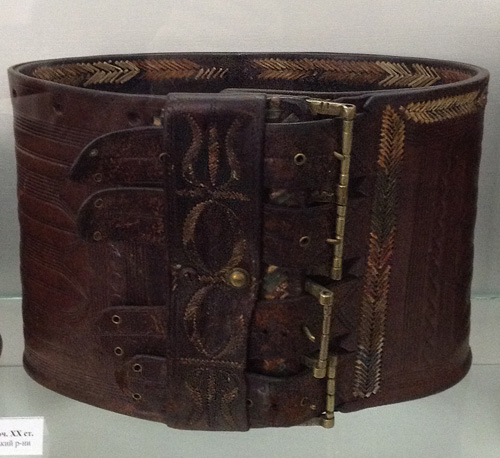 These traditional belts were popular among the men of the Carpathian Mountains. They were not only beautiful and decorative but also functional because they protected the body during weightlifting and even served as armor against knives and bullets. In this area, men often work at tree felling and transporting the wood, so they need special protection for their back and stomach. And this extremely wide leather belt does all that perfectly, and looks great in addition. Also, this accessory is an important part of the local folk costume.
These traditional belts were popular among the men of the Carpathian Mountains. They were not only beautiful and decorative but also functional because they protected the body during weightlifting and even served as armor against knives and bullets. In this area, men often work at tree felling and transporting the wood, so they need special protection for their back and stomach. And this extremely wide leather belt does all that perfectly, and looks great in addition. Also, this accessory is an important part of the local folk costume.
Such wide leather belts were used in Ukraine, Romania, Hungary, Poland, Slovakia, and some other European countries.
The width of the belt could be up to 20-45 cm (8-18 inches) and it could have 1-6 belt buckles. It was made from thick ox leather folded up twice.
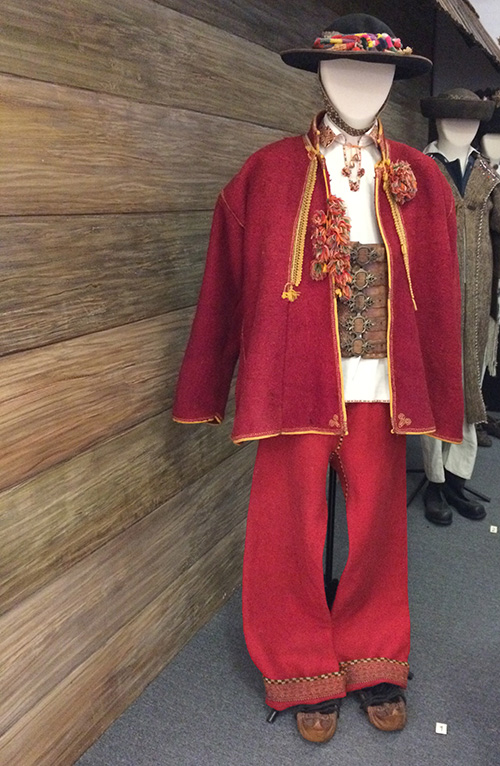
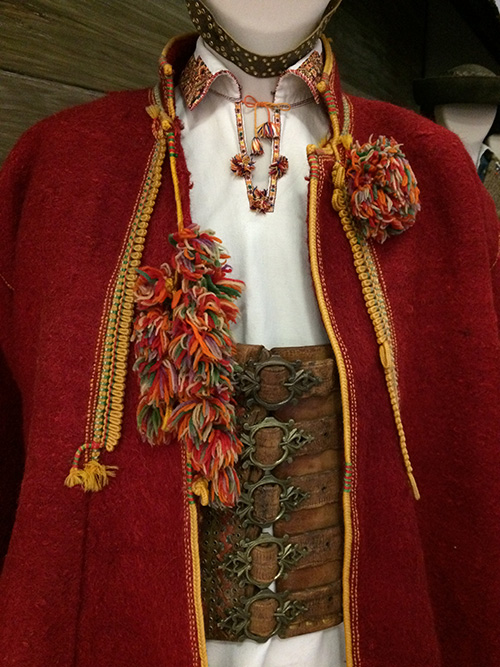
There was a wide variety of embellishments used to add some uniqueness to the piece. Embroidery, stamping on leather, cutting on leather, applique, beading, cute buttons, metal elements could be added, etc. But the appearance of a belt depended highly on the owner’s taste, his wealth, and the purpose (whether it was made for work or for festive occasions). There are leather belts from the 19th century in different museum collections in Europe that are so ornate, eye-catching, and bright even that you can’t take your eyes off them. The amount of work put into producing one such belt is unbelievable. Of course, the cost was and still is rather high, so a man usually had only one festive belt and could pass it to his son.
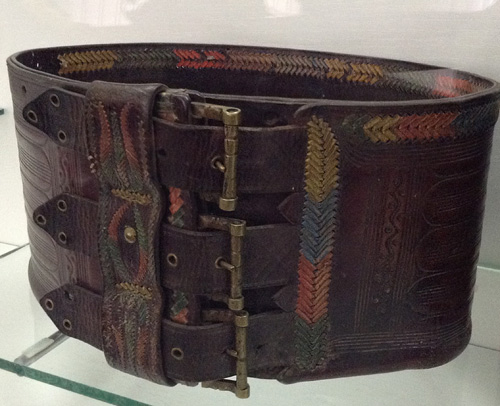
Another interesting thing about the wide Carpathian leather belt was its multifunctionality. As we’ve already mentioned, it was used to protect the body during weightlifting. Also, it could serve as body armor for the local warriors and fighters – such thick leather is able to even stop a knife, not to talk about fists. It is said that some men sewed coins inside the layers of leather so that their belt could stop bullets. So, this was a really handy accessory during the wars and revolts. But even in peacetime, such a belt was a find – it was used to carry and store small items (a leather wallet was kept inside the belt at the right side and a pipe, a fire striker, and a knife were tucked inside or attached to the belt).
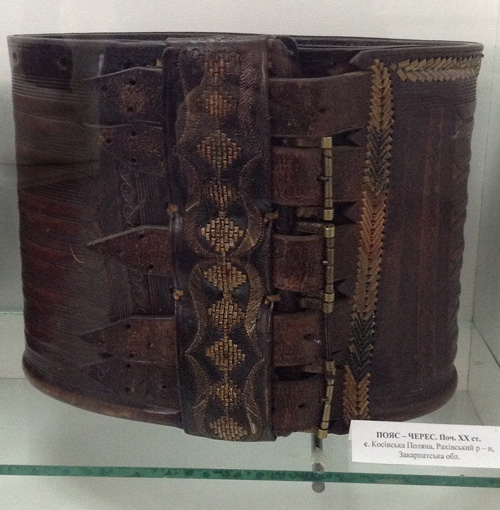
In the past, these authentic belts were super widespread in the mountainous regions of Eastern Europe. But today, they’re mostly a folk accessory, a part of the traditional outfit. Men rarely wear such belts these days only during various folklore festivals and similar occasions. Also, you can find these belts in museums and sometimes in private hands (they can be passed down several generations). Though, there are still craftsmen who make and sell them. Such belts are always handmade and unique – usually, each and every one is made and decorated individually.
